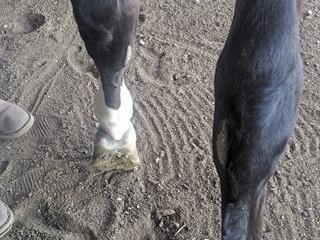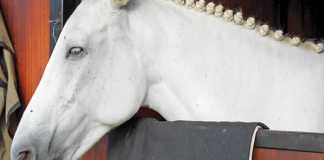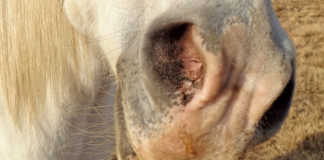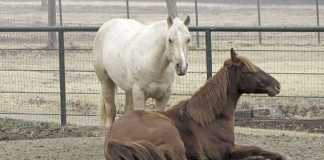
In this issue, I would like to look at three conditions involving inflammation of the horse’s joints: bog spavin, bone spavin and thoroughpin. All are similar in appearance.
Bog spavin
This is a swelling of the tibiotarsal joint of a horse’s hock. Horses with osteochondrosis (OCD) are predisposed to developing bog spavin. Poor hind limb conformation, bad shoeing and heavy training can also lead to the condition.
The swelling does not usually cause lameness or discomfort. This said, any swelling in the hock area is cause for concern and a vet should be asked to carry out a lameness examination.
This will most likely include X-rays or ultrasound to determine the exact cause of the problem and extent of the damage.
Surgery may be necessary if bog spavin occurs as a result of an OCD chip.
In some situations, a vet may recommend joint injections or intramuscular or intravenous injections with prescription medications that will help with inflammation and trauma. Bog spavin is not the same as arthritis.
However, many of the activities and conformation flaws that lead to bog spavin may also result in arthritis, tendinitis
and lameness.
It is therefore important to frequently re-evaluate aspects of your horse’s management, such as trimming/shoeing, arena footing, conditioning programme and work schedule, to avoid a problem developing.
Bone spavin
This condition, which should not to be confused with bog spavin, is a bony growth in the lower hock joint caused by osteoarthritis. It results in lamemess that can be sufficiently serious to end a horse’s competitive career.
Bone spavin usually occurs from wear and tear or repetitive trauma to the hock joint. Other risk factors include poor footing, poor conformation and incorrect trimming/shoeing.
The first symptom is subtle lameness. So horses that resist working off the hind end, seem to have back pain, or have behaviour or training problems may be suffering from this form of arthritis.
A horse that emerges from its stall stiff and sore, but ‘warms out of it’ with light exercise may have bone spavin. For this reason, horses with arthritis should be turned out as much as possible.
Treatment may include reducing the amount or level of exercise, corrective trimming/shoeing, injections to improve the health of the joint, or other medications to relieve pain and inflammation.
Thoroughpin
Thoroughpin is a swelling of the sheath around the deep digital flexor tendon as it passes over the hock. It appears as a blemish of the hock area similar to windgall.
As with bog spavin, this swelling is not accompanied by heat or pain, and it does not usually cause lameness. Any horse with poor conformation in the hock region can develop thoroughpin.
A young horse just starting work and a horse in heavy work may also be at risk. Generally, no treatment is necessary for routine cases of thoroughpin.
Kim Dyson breeds Arabians and Lusitanos, and has 22 years’ experience in holistic equine and human body work.













